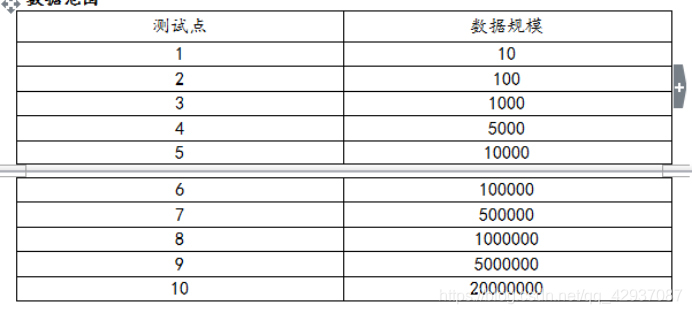【数论】异或
本文共 789 字,大约阅读时间需要 2 分钟。
题目描述
SarvaTathagata是个神仙,一天他在研究数论时,书上有这么一个问题:求不超过n两两的数的gcd。
SarvaTathagata这么神仙的人当然觉得这个是sb题啦。学习之余,他还发现gcd的某一个特别好的性质:如果有两个数i,j满足gcd(i,j)=ij(这里的为c++中的异或)的话,那么这两个数组成的数对(i,j)就是一个nb的数对(这里认为(i,j)和(j,i)为相同的,并不需要计算2次)。
当然,SarvaTathagata并不会只满足于判断一个数对是否nb,他还想知道满足两个数都是不超过n并且nb的数对有多少个。
由于SarvaTathagata实在是太神仙了,他认为这种题实在是太简单了。于是他找到了你,看看你是否能解决这个问题。

输入
共一行一个整数n,含义如题所述。
输出
一行一个整数,表示nb的数对的个数。
Sample1-in
12Sample1-out
8Sample2-in
123456Sample2-out
214394思路
先设:a>b
根据异或的性质,我们可以发现a^b是会大于等于a-b的。(这个可以推一下)
然后gcd(a,b)会小于等于a-b;那么当a^b=gcd(a,b)时a ^b=a-b;
题目中我们可以枚举c = gcd(a,b),然后枚举它的倍数,使gcd(a,b)=a-b,然后和异或对比。
#include<cstdio>int n,ans;int main(){ scanf("%d",&n); for(int i = 1; i < n; ++i) //枚举gcd(a,b)=b for(int j = i+i; j <= n; j+=i) //枚举倍数a if((j^i) == j-i) ++ans; //异或 printf("%d",ans); //输出答案}转载地址:http://mhkg.baihongyu.com/
你可能感兴趣的文章
Nginx下配置codeigniter框架方法
查看>>
Nginx之二:nginx.conf简单配置(参数详解)
查看>>
Nginx代理websocket配置(解决websocket异常断开连接tcp连接不断问题)
查看>>
Nginx代理初探
查看>>
nginx代理地图服务--离线部署地图服务(地图数据篇.4)
查看>>
Nginx代理外网映射
查看>>
Nginx代理模式下 log-format 获取客户端真实IP
查看>>
Nginx代理解决跨域问题(导致图片只能预览不能下载)
查看>>
Nginx代理静态资源(gis瓦片图片)实现非固定ip的url适配网络环境映射ip下的资源请求解决方案
查看>>
Nginx代理静态资源(gis瓦片图片)实现非固定ip的url适配网络环境映射ip下的资源请求解决方案
查看>>
nginx反向代理
查看>>
nginx反向代理、文件批量改名及统计ip访问量等精髓总结
查看>>
Nginx反向代理与正向代理配置
查看>>
Nginx反向代理及负载均衡实现过程部署
查看>>
Nginx反向代理是什么意思?如何配置Nginx反向代理?
查看>>
nginx反向代理解决跨域问题,使本地调试更方便
查看>>
Nginx反向代理配置
查看>>
Nginx启动SSL功能,并进行功能优化,你看这个就足够了
查看>>
nginx启动脚本
查看>>
Nginx在Windows上和Linux上(Docker启动)分别配置基本身份认证示例
查看>>